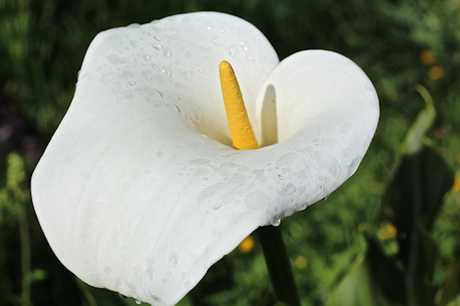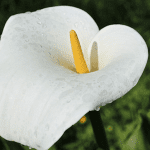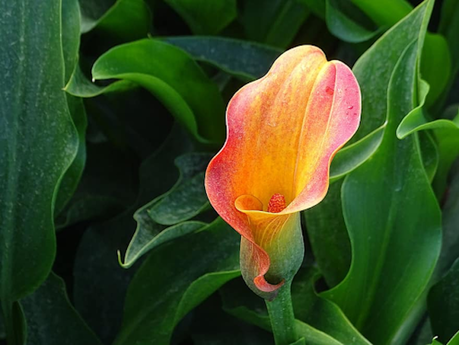

Calla originated from Africa and South America. These incredible flowers are frequently used in bridal bouquets as they remind us of the beautiful white outfits of brides. Today, we invite you to listen to us talk about the caring principles of growing Callas at home.
Distinctive Features
The Calla plant has delicate green leaves. The species with colored buds can reach 50 cm in height, and white varieties can grow up to one meter. Calla can be cultivated indoors in a pot or outside in the soil. The most popular varieties of Calla plants are:
- Calla Aethiopica: a large variety, often with a white flower. It reaches a height of one meter. Unlike all other species, this one belongs to the rhizome type.
- Calla Rehmannii: a variety of pink and red flowers that grow up to 50 cm.
- Calla Eliotta: This variety blooms profusely with golden flowers and spotted leaves. This is a light-loving variety.
There are many other types of this plant that can please you with its amazing flowering. You can also pay attention to the Captain Fuego, Cantor, Allure, Black Magic, and other impressive varieties.

Growing Calla at Home
Calla plant prefers light and frequent watering, while for blooming, it requires a dormant period. Here are the key principles of growing it at home:
1) Soil and Transplanting
These plants are cultivated in acidic soils. The optimal soil includes some sod, leaf, peat, and sandy land. Calla is replaced annually after the dormant period. The pots have to be shallow, about 15 cm in diameter. To accurately define the required depth of planting, multiply the diameter of the tuber by 3. A 5-cm drainage layer must be placed on the bottom of the pot. After transplanting the tuber, the temperature in the room is gradually increased.
2) Lighting and Temperature
Calla flower can’t stand poor lighting or excessive heat. If there is not enough light, or the temperature regime is wrong, the plant can avoid flowering. It is better if the light is diffused. In the summertime, the plant is kept at 22-25°C, while during the cold season, the temperature should be lowered by 10 degrees. For the emergence of leaves, this plant requires a difference between the day and night temperatures.
3) Watering
A recently planted tuber should be watered carefully so that it does not rot. A sprouted plant should be watered regularly as the topsoil dries out. The soil in the pot must be loosened periodically. Once a month, you can add some vinegar or lemon juice to the water for irrigation to acidify the soil.
4) Feeding
Callas should be regularly fertilized during the growing season. Liquid fertilizers are applied during every fifth watering. At the time of active development, it is necessary to apply more potassium-phosphate and fewer nitrogen fertilizers since they provoke the growth of the greenery.
If you properly care for Calla and give it some time to rest every year, the plant will certainly delight you with flowers.
Featured Image Credit: Unsplash
